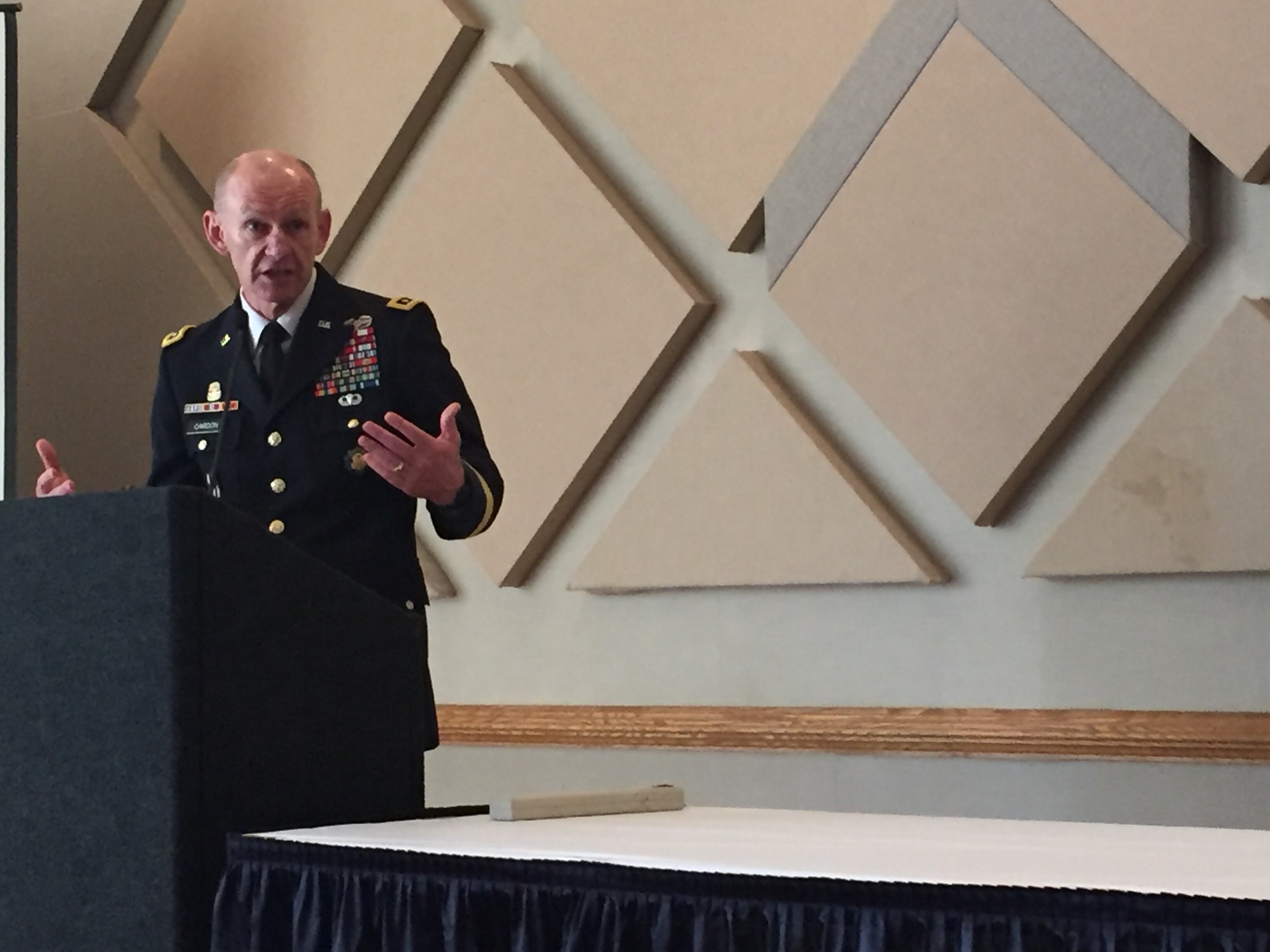The specially designated task force designed to merely focus on countering the Islamic State group in cyberspace is providing clarity and focus on operations.
Lt. Gen. Edward Cardon, commander of Army Cyber Command and the head of Joint Task Force Ares, while scant on details of the effort, said the task force is providing a dedicated force just to the counter-ISIS issue. While the force was conducting counter-ISIS operations in cyberspace, there was a prioritization issue, but "the beauty about Ares is we just have one mission to work on — we work on ISIL problems," he told reporters at the annual AUSA conference, using an alternative acronym for the Islamic State group.
Now Ares has a laser focus on operations and policy and includes lawyers working on the issue.
For full AUSA 2016 coverage: www.defensenews.com/ausa2016
The other aspect that Ares has been good at is giving a single point of entry for the personnel working these kinds of problems, he said, adding it also allows greater command and control for the overall global counter-ISIS collation, Combined Joint Task Force Operation Inherent Resolve.
In terms of a model for shaping operations and campaigns going forward, Cardon said joint task forces aren't new and provide a level of clarity not provided previously. Citing the current counter-ISIS coalition, he noted how it began with Third Army and U.S. Army Central Command, but eventually a task force was created — CJTF-OIR — to provide that singular focus and give it the necessary attention. I think the command and control structure of task forces is absolutely applicable in cyber, he said, but cautioned that it is not a solution for every problem.
Officials have been loath to provide in-depth details on the cyber front of counter-ISIS efforts. One of the reasons for this apparent lack of transparency is that anytime something is done in cyber, it can be reverse engineered, Cardon said. In cyber capture-the-flag exercises, he explained one of the main strategic decisions is to patch systems or create a weapon.
On a separate note, Cardon described how anything done in cyber is breaking new ground, given the relative nascent nature of the domain and the force. He equated this to the counterterrorism fight, noting that many take today's capabilities in this effort for granted. When a drone strike occurs today, it seems pretty routine, he said, but in 2001 a drone strike would have been a different ball game.
Programs such as Cyber Support to Corps and Below, which aims to
, provide greater understanding to commanders of all stripes. Cyber Support to Corps and Below exposes commanders to cyber capabilities, with some saying: "I didn’t know I could do that," Cardon said. Once commanders understand this, Cardon added, cyber can be more widely incorporated.
Mark Pomerleau is a reporter for C4ISRNET, covering information warfare and cyberspace.







